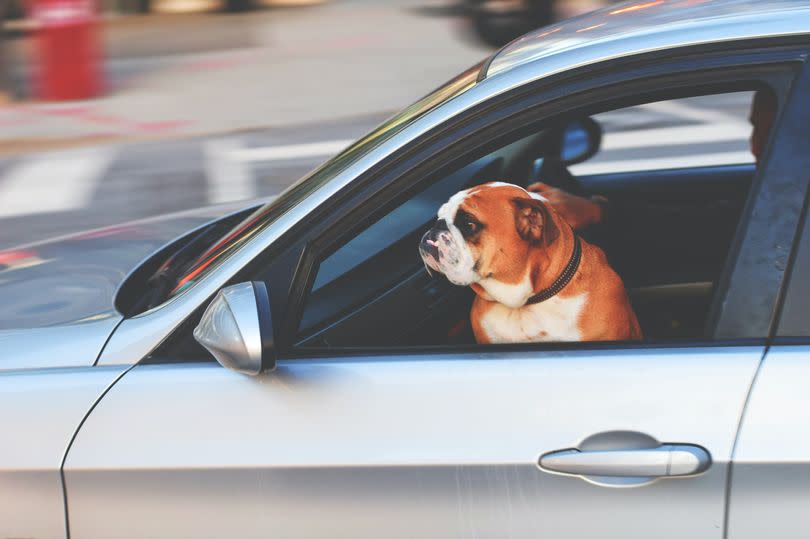Every person who drives with pets in the car could risk major fines

Some little-known rules could land pet owners with hefty fines.
According to a new study, three-quarters of dog owners are planning to take them away on a holiday with them in 2024. But whether they're staying in the UK or heading further afield, drivers could face penalties if they don’t prioritise the safety of their dog or other pets when driving.
With this in mind, the car insurance experts at Compare the Market have shone some light on the rules of the road that pet owners need to follow, and they’ve also provided some top tips for driving with pets as we head into summer.
READ MORE: Asda fans find 'beautiful' and 'perfect' £11 George dress
READ MORE: Furious mum claims Uber Eats driver 'stole' her Asda shopping
Under rule 57 of The Highway Code, animals must be suitably restrained at all times when in the car. This is so that they don’t distract the driver and keep everyone in the vehicle safe.
Failure to comply with this could see drivers facing a charge of careless and inconsiderate driving, which could lead to an unlimited fine and three to nine points on their licence. Plus, if a pet isn’t restrained and causes an accident, drivers may find that their car insurance provider refuses to pay out.
Five top tips for driving with pets, to keep everyone safe, and avoid fines:
Use a crate or carrier: One of the best ways to keep pets safe in the car is to put them in a crate or carrier. It needs to be well-ventilated, allow for enough room for the pet to stand up and turn around, and also should be strapped in so it doesn’t move around.
Different animals might also have slightly different needs. For dogs, it’s important that they’re able to see their owner out of the carrier to reduce their anxiety. Cats and rabbits will want their favourite items in their crate to make them feel safe.
Buy comfortable restraints: For dogs in particular, using a specialised harness or seat belt can be an alternative way to keep them safe and restrained while in a vehicle. These will allow them to partially move and even sit upright. Drivers just need to make sure they are restrained enough so they aren’t able to hang their heads out of the window, as dust or debris can fly into their eyes, and they are more at risk of serious injury.
Never leave your pet alone in a vehicle: Even if it doesn’t seem that hot outside, cars can heat up quickly, especially when in direct sunlight. Animals don’t have the same ability to regulate their bodies as humans do, so parking in the shade or cracking the window isn’t enough.
Bring food and necessities: Drivers need to make sure they pack for their pets too, thinking about things like food, bowls, lead, poo bags, and medication — plus extras in case of emergencies. It’s also really important to keep pets hydrated. Drivers must make sure water is easily accessible for their pets, and if they’re worried about spills, there are specialist bowls available that are designed to be used in cars.
Check on your pet regularly and make exercise stops:
Motorists should also try to make regular stops so they can check their pet is doing okay, and keep an eye out for signs of overheating or car sickness, such as heavy panting. Regular stops are also a good chance for pets to get some exercise, and lots of motorway service stations have grassy areas where pets (and owners) can stretch their legs.
It’s important to note, however, that rule 56 of The Highway Code states that dogs should not be allowed to walk on a road on their own. If motorists do stop to stretch their pet’s legs, they must make sure to keep them on a short lead at all times when walking on a pavement, road, or path.
Don't miss the biggest and breaking stories by signing up to the Echo Daily newsletter here

 Yahoo News
Yahoo News 
